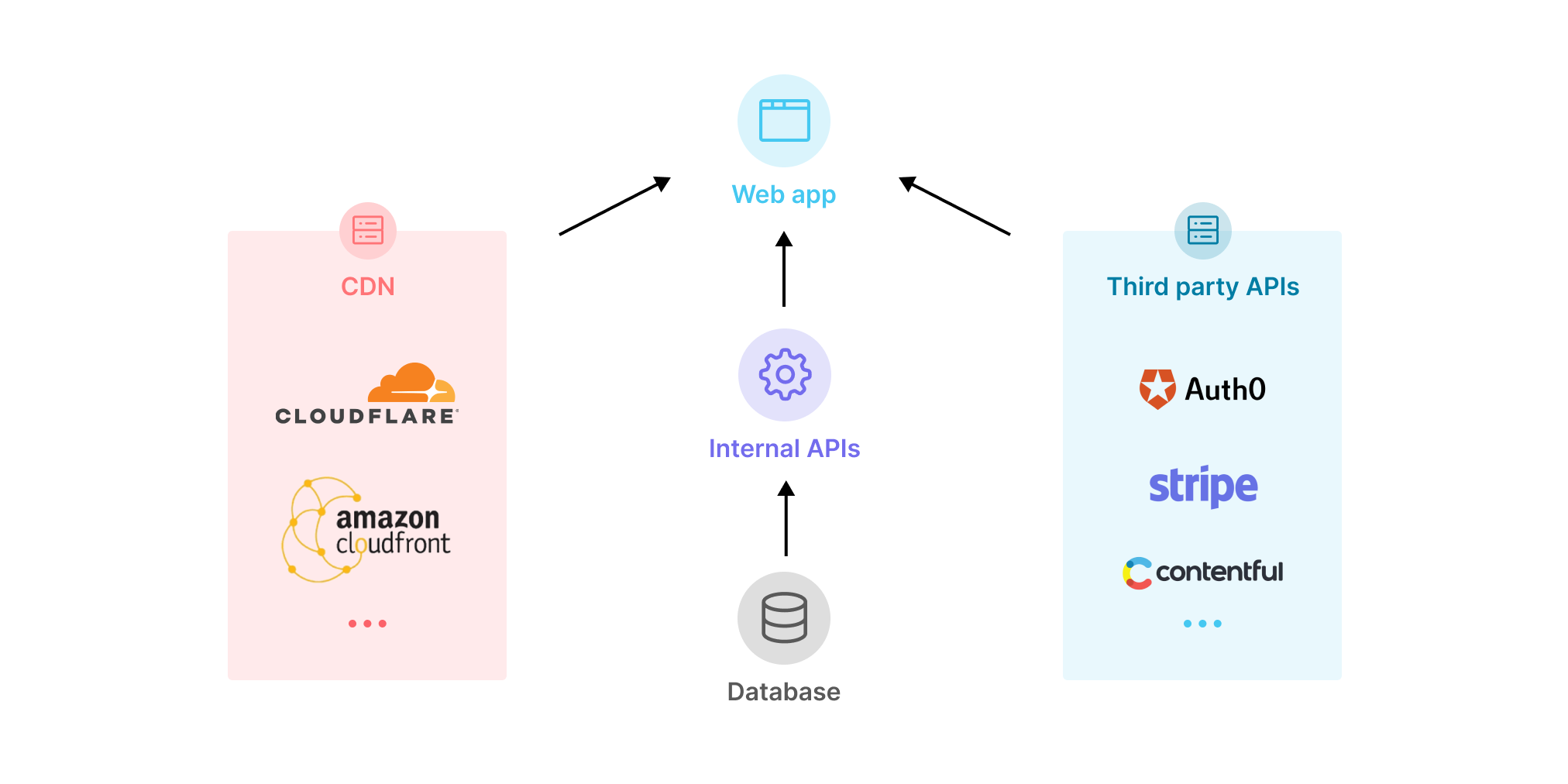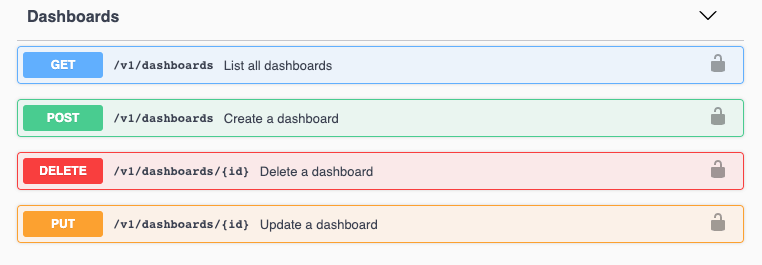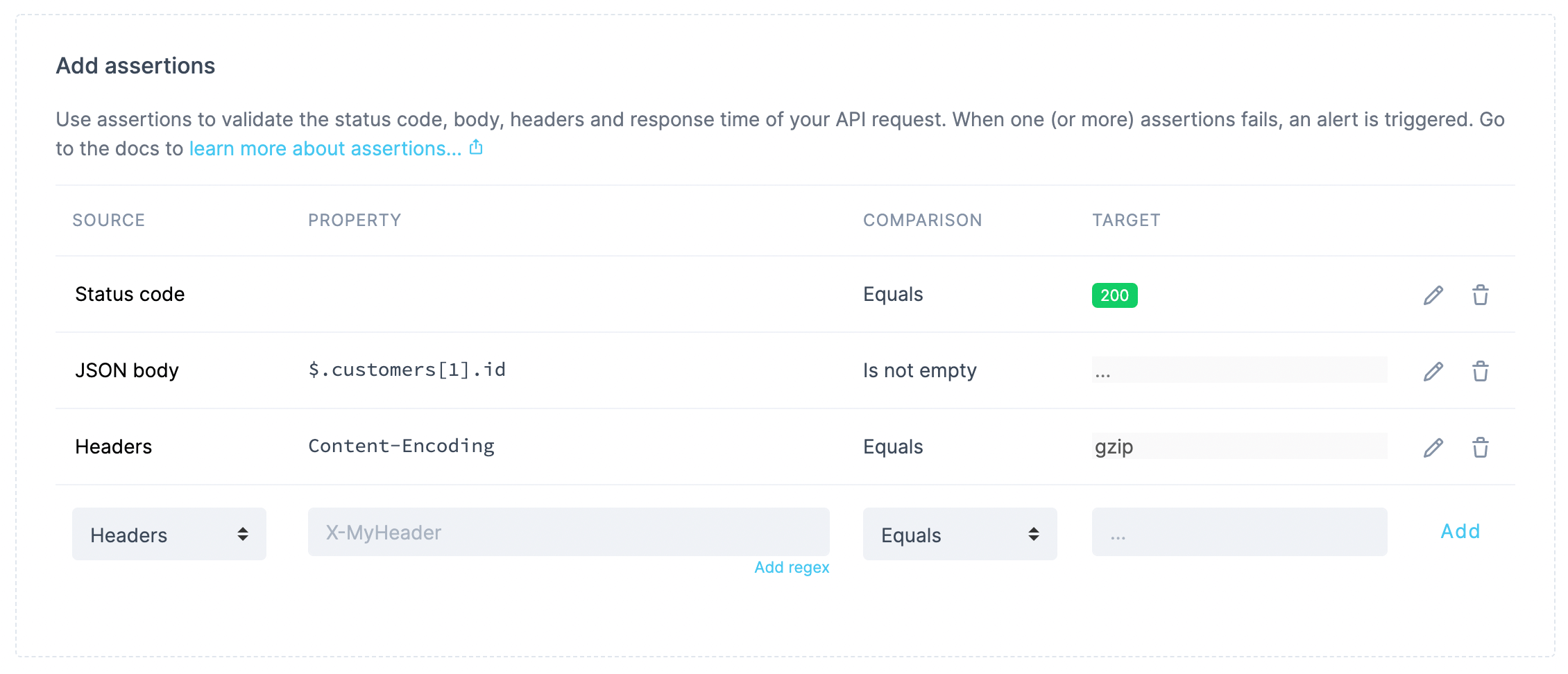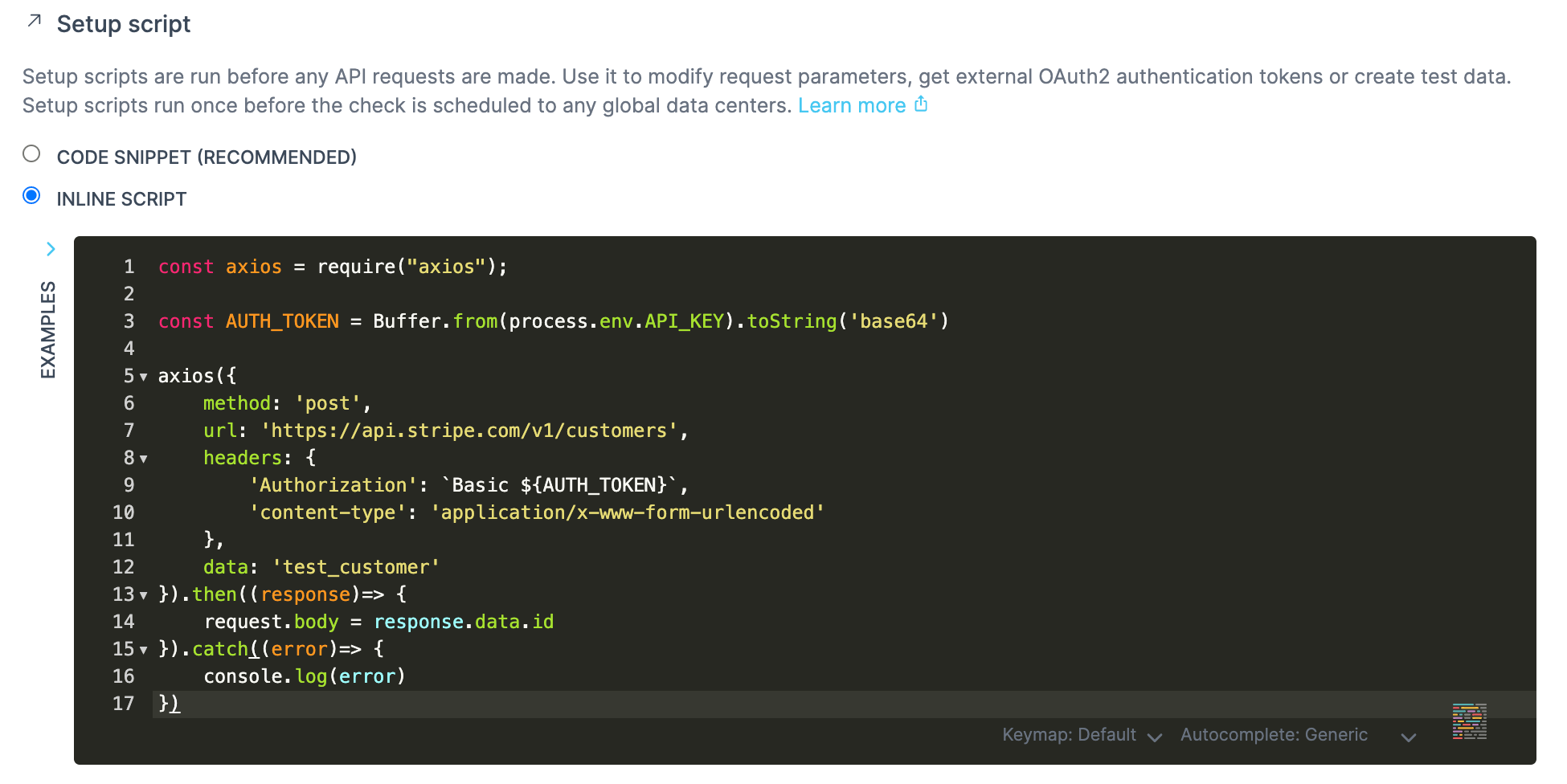Application Programming Interfaces (APIs) are used throughout software to define interactions between different software applications. In this article we focus on web APIs specifically, taking a look at how they fit in the Jamstack architecture and how we can set up API monitoring in order to make sure they don't break and respond fast.

The rise of APIs
With the rise of the Jamstack, the already broadly used web APIs have been brought further into the spotlight and explicitly named as cornerstone of a new way of building web applications. In the Jamstack paradigm, applications rely on APIs returning structured data (JSON or XML) when queried via a build process or Javascript-based frontend.
The API calls might be aimed at internal services or at third-parties handling complex flows such as content management, authentication, merchant services and more. An example of third-party API could be Stripe, which acts as payment infrastructure for a multitude of businesses.
Given their importance in this new kind of web application, internal and external APIs need to be tightly monitored, because failures and performance degradations will immediately be felt by the end-user.
API failures
API endpoints can break in a variety of ways. The most obvious examples are:
- The endpoint is unresponsive/unreachable.
- The response is incorrect.
- The response time is too high.
All of the above can result in the application becoming broken for the end-user. This applies to internal APIs and, especially in the case of Jamstack applications, to third parties as well. API checks allow us to monitor both by mimicking the end-user’s own behaviour.
API checks
If we were interested in just verifying a server or a virtual machine’s availability, we could rely on a simple ping/uptime monitoring solution. API monitoring is more fine-grained than that though, as we need to validate functionality and performance on each API endpoint. API checks do exactly that, and they are composed of the following:
- An HTTP request.
- One or more assertions, used to specify exactly what the response should look like, and fail the check if the criteria are not met.
- A threshold indicating the maximum acceptable response time.
The more customisable the HTTP request is, the more cases can be covered, for example with authentication, headers and payloads.
It is worth noting that in real-world scenarios, requests do not happen in a vacuum: they are often handling data retrieved previously, possibly by earlier API calls. Therefore, some mechanism to gather this data and inject it into the request is often needed.
Let’s dive in deeper into each point.
HTTP request for REST APIs
There is a large variety of valid requests that a user might make to a given endpoint. Being able to customise all aspects of our test request is therefore fundamental. Key aspects are:
- Methods, like
GET,PUT,POST,DELETE, etc - Headers, like
Accept,Authorization,Content-Type,Cookie,User-Agent, etc - Query parameters

Essentially, we are trying to craft a complete request for exact endpoint. Not only that, but we might want to have multiple requests set up to cover specific options or negative cases, too.
One such case can be where user-specified parameters such as pagination and timeframes might largely change the response. This is exemplified by the List Customers method in Stripe's Customer API, which we can use to query elements in very different ways, such as by just specifying a limit of results or asking for all results linked to a specific creation date. In this case, both of the following cases are worth monitoring:
curl https://api.stripe.com/v1/customers \
-u sk_test_4eC39HqLyjWDarjtT1zdp7dc: \
-d limit=3 \
-G
curl https://api.stripe.com/v1/customers \
-u sk_test_4eC39HqLyjWDarjtT1zdp7dc: \
-d created=1616519668 \
-G
If we chose to set up a call using Javascript, for example, we could achieve the same call as in the first case above using axios:
const { default: axios } = require("axios");
const AUTH_TOKEN = Buffer.from(process.env.API_KEY).toString('base64')
axios({
method: 'get',
url: 'https://api.stripe.com/v1/customers',
headers: {
'Authorization': `Basic ${AUTH_TOKEN}`,
'Content-Type': 'application/x-www-form-urlencoded'
},
data: 'limit=3'
}).then((response)=> {
console.log(response.data)
})
HTTP request for GraphQL APIs
So far we have looked at a REST API. Let’s now take a look at an example of how to build a request for a GraphQL endpoint. We will use GitHub's GraphQL API to retrieve information about the latest open issues on Headless Recorder's repository.
To achieve that, we make a POST request to the API’s GraphQL endpoint: https://api.github.com/graphql.
We also need to authenticate to GitHub, by sending over our personal access token via the Authorization header.
The request body will contain our GraphQL query:
query {
repository(owner:"checkly", name:"headless-recorder") {
issues(last:3, states:OPEN) {
edges {
node {
title
url
labels(first:3) {
edges {
node {
name
}
}
}
}
}
}
}
}
Putting it all together into a cURL command:
curl https://api.github.com/graphql -H "Authorization: bearer <GITHUB_TOKEN>" -d '{"query":"query { repository (owner:\"checkly\", name:\"headless-recorder\") { issues (last:3,states:OPEN) { edges { node{ title url labels(first:3) { edges { node { name } } } } } } } }","variables":{}}'
The response should look similar to the following:
{
"data": {
"repository": {
"issues": {
"edges": [
{
"node": {
"title": "UI truncated when default chrome zoom is more than 100%",
"url": "https://github.com/checkly/headless-recorder/issues/161",
"labels": {
"edges": [
{
"node": {
"name": "🐛 bug"
}
},
{
"node": {
"name": "🐣 good first issue"
}
}
]
}
}
},
{
"node": {
"title": "Add support for Java?",
"url": "https://github.com/checkly/headless-recorder/issues/162",
"labels": {
"edges": [
{
"node": {
"name": "🙏 feature request"
}
}
]
}
}
},
{
"node": {
"title": "Default to text selectors for Playwright",
"url": "https://github.com/checkly/headless-recorder/issues/167",
"labels": {
"edges": [
{
"node": {
"name": "🦾 enhancement"
}
},
{
"node": {
"name": "❓ question"
}
}
]
}
}
}
]
}
}
}
}
Assertions
To validate the API response, we should be able to check against
- Status code
- Headers
- Body
Let’s look at an example: creating a customer via the Stripe Customer API. Since we are not the API’s developers, we are assuming the result we get running call right now is correct and can be used to model our assertions. Let’s run the following curl command in verbose mode:
curl -v https://api.stripe.com/v1/customers \
-u sk_test_4eC39HqLyjWDarjtT1zdp7dc: \
-d description="My First Test Customer (created for API docs)"
Within the lengthy output we find the response (in curl denoted by the ‘<’ symbol), and in it all the important details we need for our assertions.
First, we notice the successful status code:
< HTTP/2 200
After that, we can see the headers, which we might want to check for:
< content-type: application/json
< content-length: 1190
< access-control-allow-credentials: true
< access-control-allow-methods: GET, POST, HEAD, OPTIONS, DELETE
< access-control-allow-origin: *
< access-control-expose-headers: Request-Id, Stripe-Manage-Version, X-Stripe-External-Auth-Required, X-Stripe-Privileged-Session-Required
< access-control-max-age: 300
< cache-control: no-cache, no-store
< request-id: req_S9P5NqvZXzvvS0
< stripe-version: 2019-02-19
< x-stripe-c-cost: 0
< strict-transport-security: max-age=31556926; includeSubDomains; preload
And finally the response body, which we might want to inspect to ensure the right data is being sent back:
{
"id": "cus_JAp37QquOLWbRs",
"object": "customer",
"account_balance": 0,
"address": null,
"balance": 0,
"created": 1616579618,
[clipped]
We could expand on our previous code example by add adding an assertion library, such as chai's or Jest expect:
const { default: axios } = require("axios");
const expect = require('expect')
const AUTH_TOKEN = Buffer.from(process.env.API_KEY).toString('base64')
axios({
method: 'get',
url: 'https://api.stripe.com/v1/customers',
headers: {
'Authorization': `Basic ${AUTH_TOKEN}`,
'Content-Type': 'application/x-www-form-urlencoded'
},
data: 'limit=3'
}).then((response)=> {
console.log(response.data)
expect(response.status).toBe(200) // 1) assert again status code
expect(response.headers['content-type']).toBe('application/json') // 2) assert against header
expect(response.data['has_more']).toBe(true) // 3) assert against body
})
We are now asserting against all three point mentioned above. We could of course go on and add additional assertions against both headers and body.
Response time thresholds
Having an endpoint return the correct result is only half the battle. It is imperative that the response reaches the user quickly enough not to disrupt any dependent workflow. In the worst case, where the response time exceeds what the end user is prepared to wait, a performance failure is undistinguishable from a functional one.
The easiest way to handle this requirement would be to assert that the specific response time be lower than a certain value, or even just set a timeout for our axios request by adding the timeout: 7500 property in the previously shown request config.
Instead of simply asserting against a specific response, we might want to set different thresholds: based on the nature of our service, a 2x slowdown might still leave it in what we define as an operational state, while a 10x one might not.
API monitoring best practices
Now that we are clear on the key requirements for setting up API checks, let’s think about what and how we should monitor.
Monitor every endpoint
We want to monitor every API endpoint our application exposes. Remember that different HTTP methods define different API endpoints. For example:
GET /user/:idPUT /user/:id
The above count as two separate endpoints, even though the URL is the same.
Cover key API parameters
Some parameters can change the endpoint’s response significantly. We should strive to have separate checks verifying that the endpoint is behaving correctly across different configurations.
Keep checks focused & independent
API monitoring checks must be organised as to minimise the time needed to identify resolve the underlying issue. This means we need to keep our checks focused on a specific case (vs trying to have a single check do many things) and independent from each other (vs building chains of checks that build on top of one another).
Scheduled global API checks
Checkly specialises in API monitoring and allows users to run API checks on a schedule from global locations. We can combine these checks with custom alerting to be able to quickly respond and remediate potential API issues.

A Checkly API check is comprised of the following components.
Main HTTP request
The most basic building block of Checkly’s API check is the main HTTP request. This can be fully configured in its method, URL, parameters and body to fully reproduce a real-world web API call.

Our previous GraphQL-based example is also supported, see the GraphQL option under the Body tab.
Assertions
Assertions allow us to check for every key aspect of the response. A check with one or more failing assertions will enter failing state and trigger any connected alert channel.

In this example, we are checking against:
- The status code, expected to be
200. - The id of one of the customers returned as part of the response’s JSON body. Here we could assert a specific value, but in this case we are happy with just verifying that the field is not empty.
- The value of the
Content-Encodingheader, expected to equalgzip.
Response time limits
Response time limits enable us to set different thresholds to decide exactly which response time maps to a hard failure, a pass or a degradation. We can use transitions between these states to trigger different kinds of alerts using our preferred channels.

Setup and teardown scripts
Checkly is highly programmable and allows users to run scripts before and after the main HTTP request of an API check.

Setup scripts run before our check and give us access to properties like the URL, headers and query parameters, enabling us to set up all the prerequisites for a successful request. Some examples could be:
- Fetching a token from a different API endpoint.
- Setting up test data on the target system.
- Formatting data to be sent as part of the request.
Teardown scripts run after the request has executed, bur right before the assertions. They are useful for manipulating the response (for example to remove sensitive information) or removing any test data on the target system.
Improving our monitoring
As we increase our monitoring coverage across our APIs, we can also increase the efficacy of our setup by:
- Importing existing Swagger/OpenAPI specs or even cURL commands using built-in functionality.
- Defining our API checks as code to scale our setup while lowering maintenance needs.
- Combining our API checks with E2E monitoring for any website or web app service whose API we might be monitoring.
Read More
Checkly CLI
Understand monitoring as code (MaC) via our Checkly CLI.
End to end monitoring
Learn end-to-end monitoring with playwright to test key website flows.
OpenAPI/Swagger Monitoring
OpenAPI and Swagger help users design and document APIs in a way that is readable from both humans and machines.